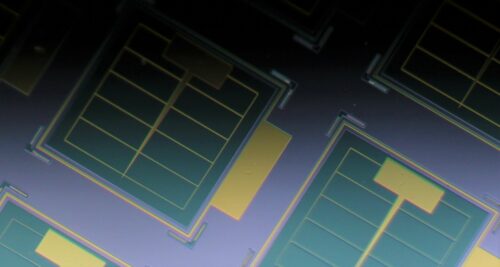Researchers at the University of Cambridge have designed a radiation tolerant photovoltaic cell featuring an ultrathin layer of light absorbing material.

Satellites are powered by photovoltaic cells that convert sunlight into electricity. But the Sun also emits radiation which causes degradation of these solar cells. Solar cells absorb light and emit photon energy which is then transferred to negatively charged electrons. These electrons act as a charge carrier.
The problem occurs when these electrons are brought under the influence of radiation. Irradiation in space causes damage and lowers efficiency by displacing atoms in the solar cell material and reducing the lifetime of the charge carriers.
To eliminate this degradation researchers have designed a thinner layer of photovoltaic cells. This could increase the longevity of flow as the charge carriers have less far to go during their shortened lifetimes. The investigators built two types of photovoltaic devices using the semiconductor gallium arsenide. One was an on-chip design built by layering several substances in a stack. The other design involved a silver back mirror to enhance light absorption.
Researchers developed an environment similar to that in space by bombarding these new devices with protons generated at the Dalton Cumbrian Nuclear Facility in the U.K. The performance of the photovoltaic devices before and after irradiation was studied using a technique known as cathodoluminescence that can give a measure of the amount of radiation damage. A second set of tests using a Compact Solar Simulator were carried out to determine how well the devices converts sunlight to power after being bombarded with protons.
“Our ultra-thin solar cell outperforms the previously studied, thicker devices for proton radiation above a certain threshold. The ultra-thin geometries offer favorable performance by two orders of magnitude relative to previous observations,” said author Armin Barthel. This new device requires nearly 3.5 times less cover glass than the thicker cells. This will translate to a lighter load and significant reduction in launch costs as they will deliver the same amount of power even after 20 years of operation.




